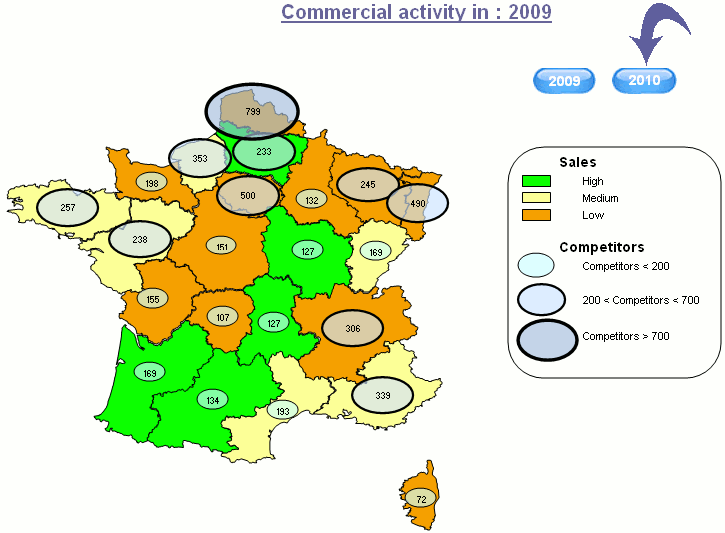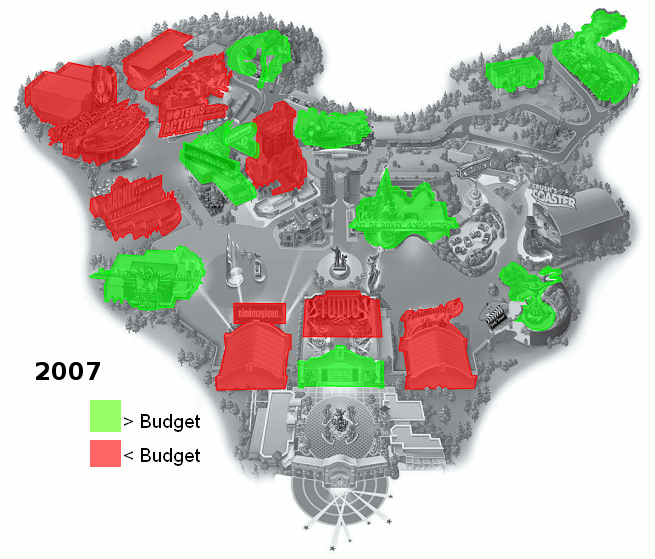GISVM is a Ubuntu 8.04 Linux distribution packaged as a virtual machine, an OS that can be run in a window inside of another OS like Windows, Mac OS X, or even another Linux distribution. It contains a number of open-source GIS packages already installed, including:
- uDig
- gvSIG
- Kosmo
- FWTools / OpenEV
- MapServer
- PostGIS
It’s a big 1 GB RAR file download that decompresses into 3 GB; if you don’t have a program that handles RAR compression, try the free program 7-Zip. To run the virtual machine, you’ll need to install either the VMWare Player or VirtualBox; I’d recommend the latter since it’s been released as open source by Sun, and also doesn’t require registration for the download. Players are available for Windows XP/Vista, Mac OS X and Linux for both platforms. Since you’ll be running two operating systems simultaneously, the demands on your computer can be significant. I wouldn’t run it in less that 1 GB of RAM for Windows XP or Linux, and 1.5 GB for Vista or Mac OS X.
From VirtualBox, use the Virtual Disk Manager in the File menu to Add the decompressed vmdk file to your list of hard disks:
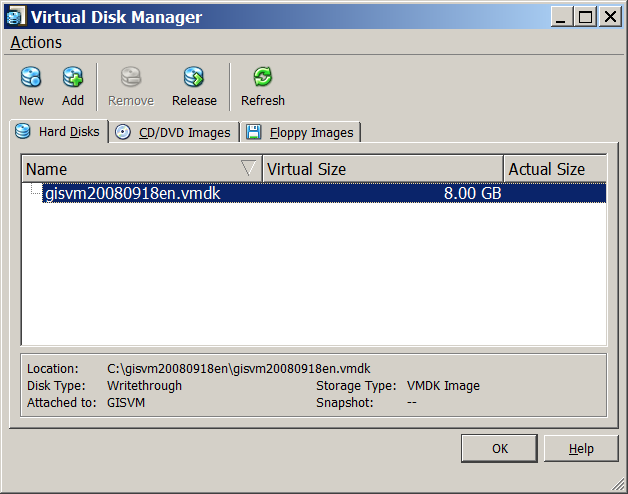
Then create a New Virtual Machine using Virtual Box’s wizard. Choose Ubuntu as the OS:
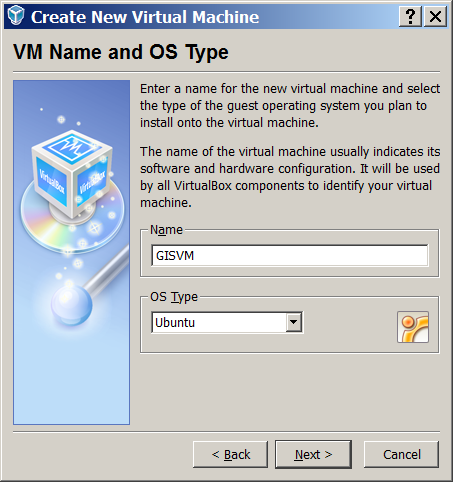
In subsequent dialog windows, give it as much RAM memory as you can spare, and select the vmdk hard disk image as the Existing hard drive. Once you’re done, click on the Start button and the GISVM will open up in its own window, like the one below running on my Windows Vista system:
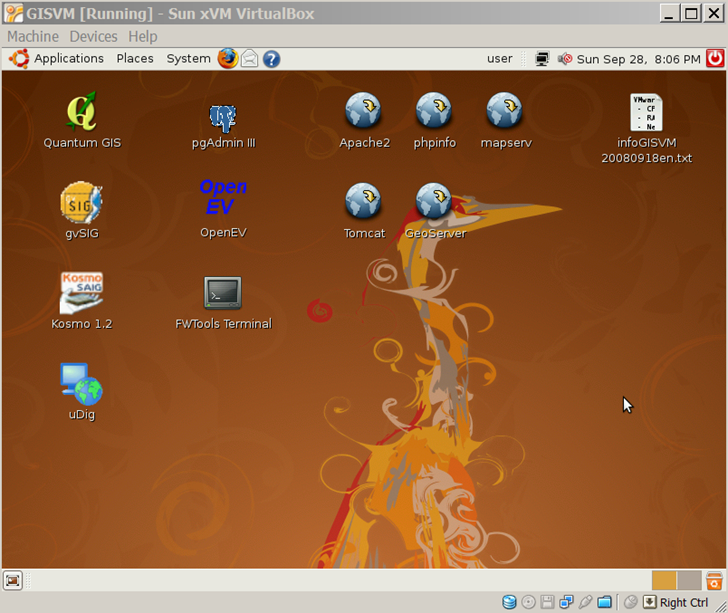
One thing you’ll discover quickly is that as soon as you click or type anywhere in the virtual machine window, all mouse/keyboard input is confined to the virtual window, and you won’t even be able to move the mouse cursor out of that window. Pressing the right Ctrl key on your keyboard will release this control, so that you can access your regular OS with the mouse/keyboard again. The infoGISVM*.txt file in the upper corner is worth a look, since it contains basic information about the installed programs, and the basic user passwords.
On my computer system (2.4 GHz Quad Core, 3 GB of RAM, 1 GB assigned to GISVM), the virtual OS machine is very responsive, and programs open up almost as quickly as they do running natively. Here’s qQIS in the virtual machine window:
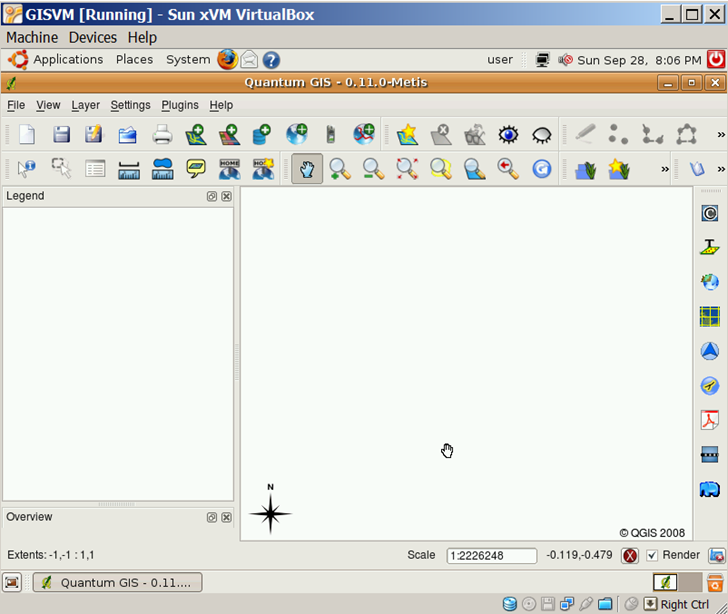
I would have liked to play around with it a bit more, but I ran into a major issue: the largest screen resolution you can get in this virtual machine is 800 x 600, and it seems to be impossible to add additional resolutions. This might be a hardware-related issue, but I don’t think so, since the screenshots on the GISVM website also appear to be in this resolution. I haven’t run in 800 x 600 in 12 years, and I’m not about to go back to that now.
I’ve run into this problem before with Ubuntu 6 and 7, where you’re limited in your selection of screen resolutions if you’re running it as a virtual machine or on a remote machine using VNC with no monitor attached. It’s pretty retarded that this is still a problem in Ubuntu 8.04, and IMO another sign that Ubuntu isn’t ready yet for real people. Don’t tell me it can be fixed in the xorg.conf file; A, it can’t (I’ve tried), and B, regular non-techie users shouldn’t have to try to sudo fix this problem in an arcane text file.
If you can live with an 800 x 600 screen resolution, and want to try out Linux apps from Windows or Mac, GISVM is worth a look. If not, I’d wait until a version comes out that supports larger virtual screen resolutions.
Addendum: See the comments section for solutions to some of these problems.
